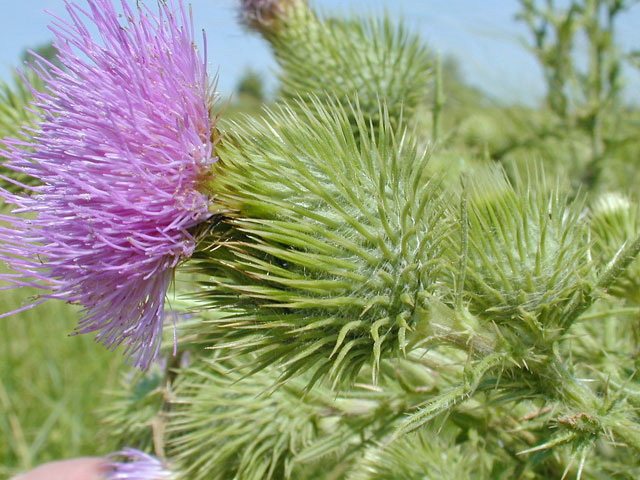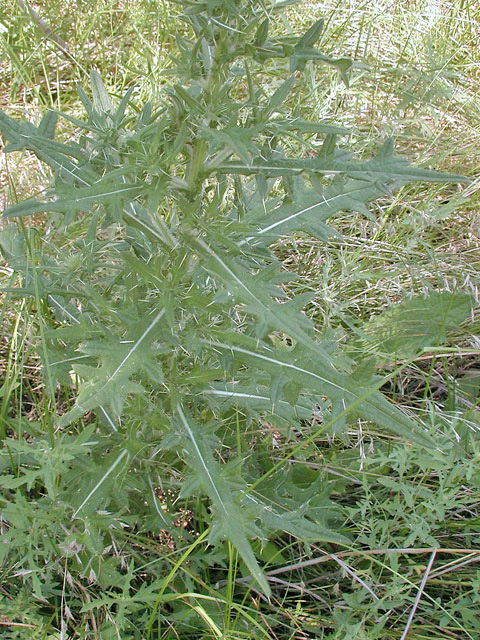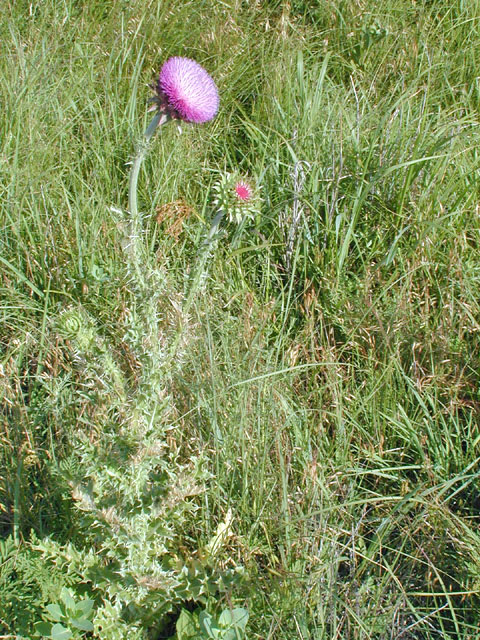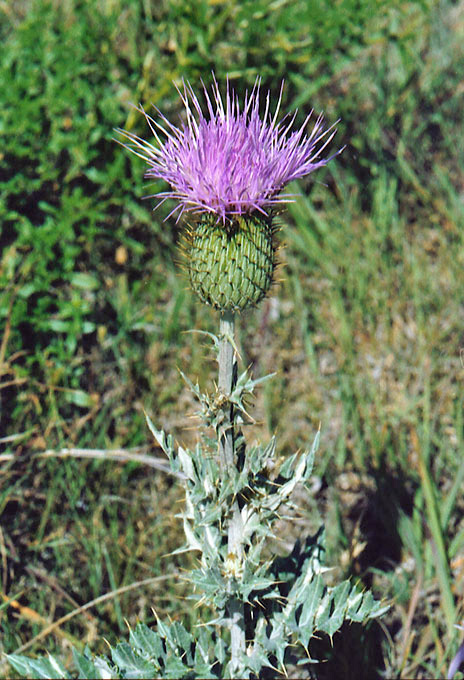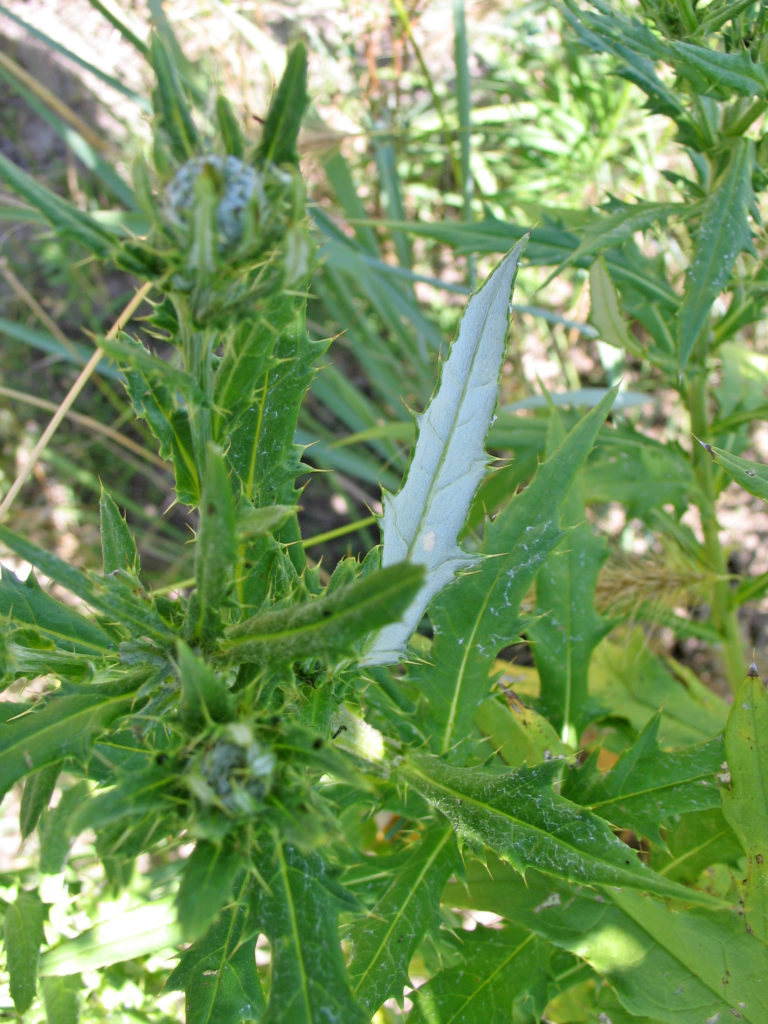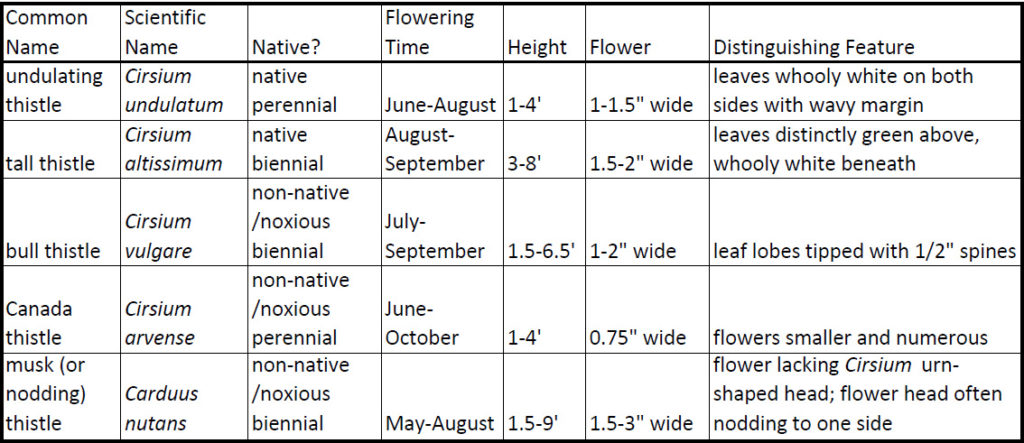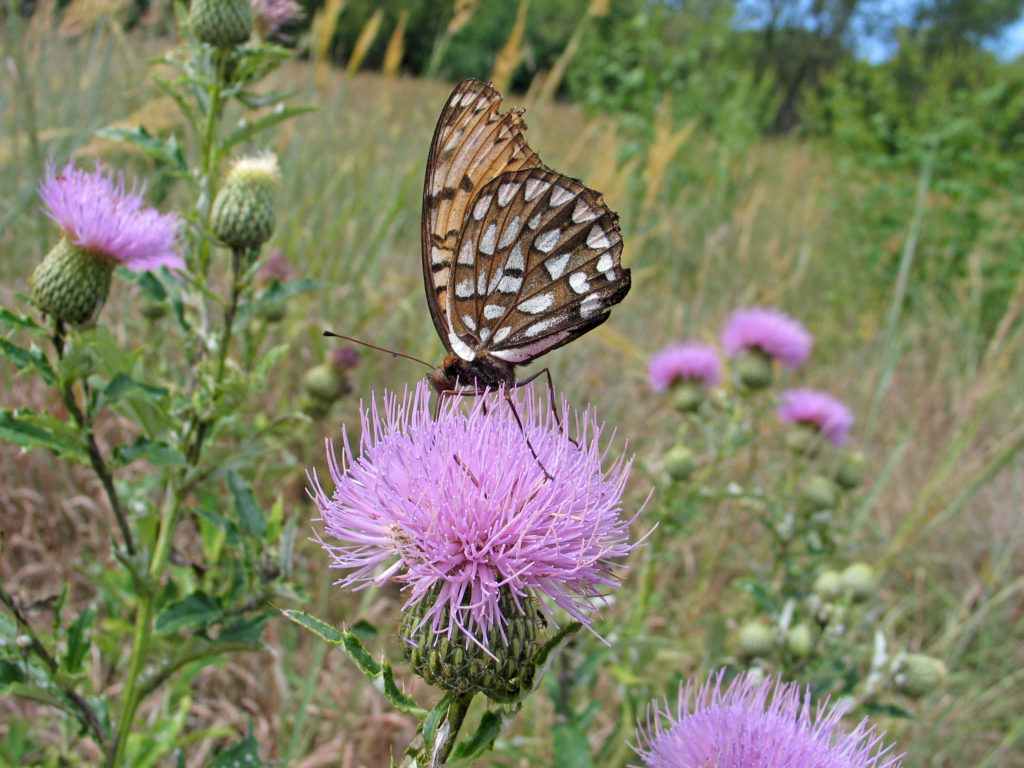I encourage you to embrace thistles. Our South Central Kansas native species are colorful and attractive to pollinators. With the abundance of precipitation we’ve received this year, it has been a great year for plant growth and flowering, and thistles have certainly been among the benefactors. Don’t be so quick to dig out every plant you find.
Non-Native Thistles
Thistles are an often prickly topic and one to make many prairie landowners bristle. A number of thistle species are on the Kansas noxious weed list, including bull thistle (Cirsium vulgare), Canada thistle (Cirsium arvense), and musk thistle (Carduus nutans). So, it is no wonder, that the mention of these species makes us cringe. When present on a site, they are often dominant and problematic.
Native Thistles
There are, however, two native thistles found on our South Central Kansas prairies that often get a bad rap because they are confused with their noxious and more invasive relatives. The native species, undulating thistle (Cirsium undulatum) and tall thistle (Cirsium altissimum) are the only thistles I have found on most South Central Kansas prairies I visit. They have beautiful flowers and play an important role as a nectar source for many species of butterflies and other insects. When in the peak of their respective bloom times, undulating and tall thistle flowers are hot spots for a host of insect pollinators, the predators that eat these insects, and birds (especially finches), who will later eat the seeds.
The following table provides more information about the native and non-native species found in Kansas. Thanks to Mike Haddock (http://www.kswildflower.org) for some of the photos and information compiled for this post.


